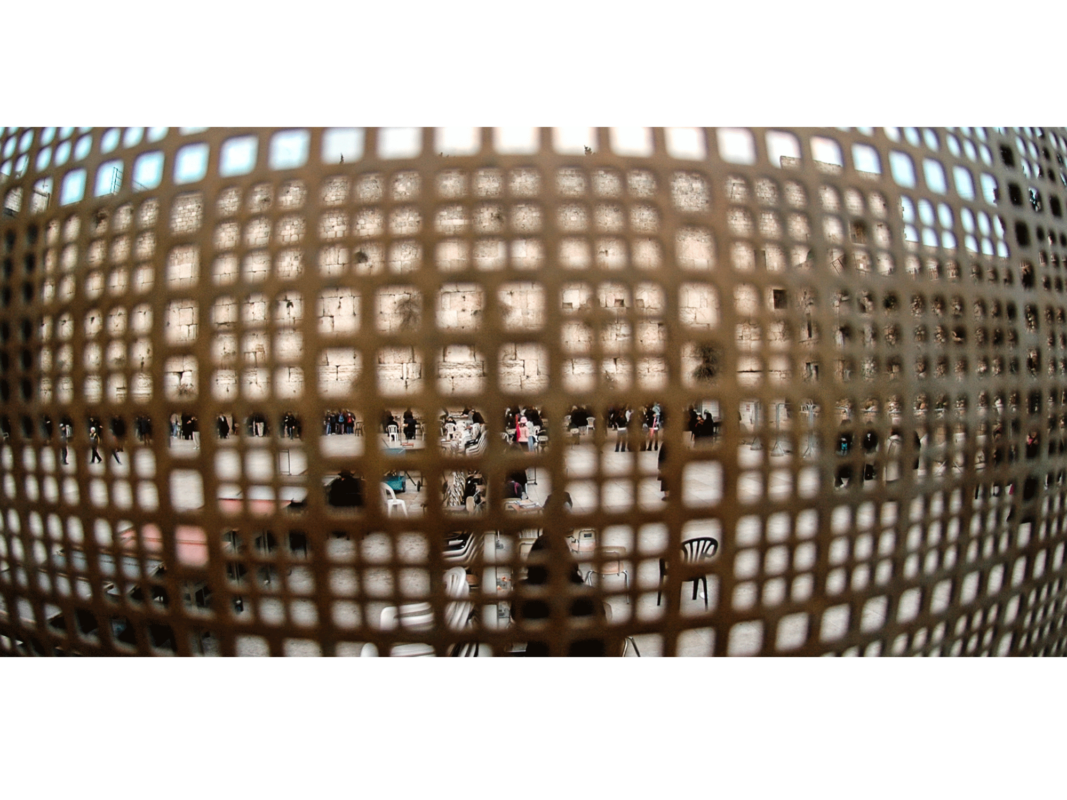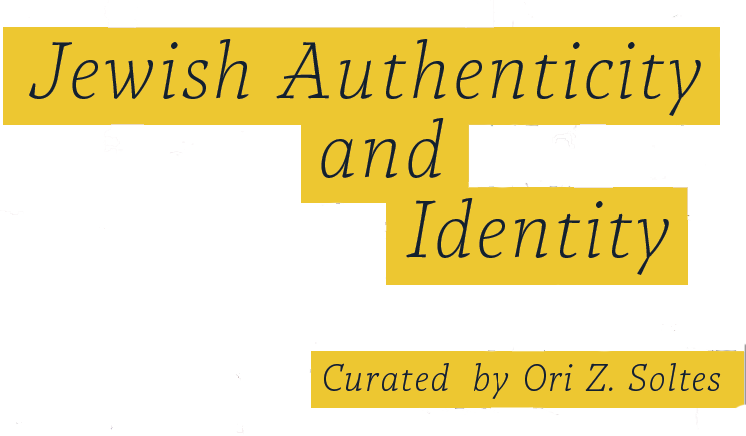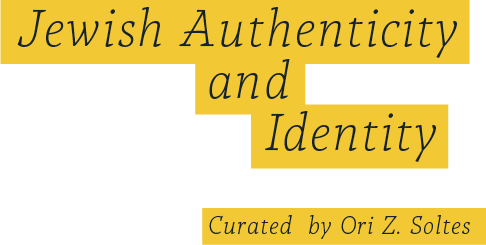
“Western Wall, Jerusalem,” Stephen Sholl, 2004, digital image with dimensions 1758 x 874
The Kotel is an icon and icons can also become clichés, which is what makes the photograph by Stephen Scholl, from New York City, so visually compelling. One might not even identify the subject at first glance. On the one hand he has provided an interesting visual, as we peer from a fish-eye-lens perspective through a tightly-meshed fence toward the Wall, at a distance that shrinks the dark-garbed faithful praying at its base into an abstract agglomeration of black color; scattered plastic chairs, a group of them piled just through the fence, imbue the sacred area with a certain profane down-to-earth reality. On the other hand, the impenetrable weave of the fence may remind at least some of us of the ongoing, very profane controversies regarding who has the right to pray in which locations along the Wall’s sacred extent. A similarly impenetrable fence separates men from women; the patterns of permissibility are embedded deep within a patriarchal tradition from which those governing access to these precincts have not emerged. Those parts of the Jewish past—the internal Jewish past—remain darkly distant from the light that recognizes how equally God loves humanity, regardless of gender, and all human prayer.
Stephen Sholl is a Jewish photographer who enjoys traveling the world, especially places with a Jewish history or influence. You can find his work online at stephensholl.smugmug.com.

